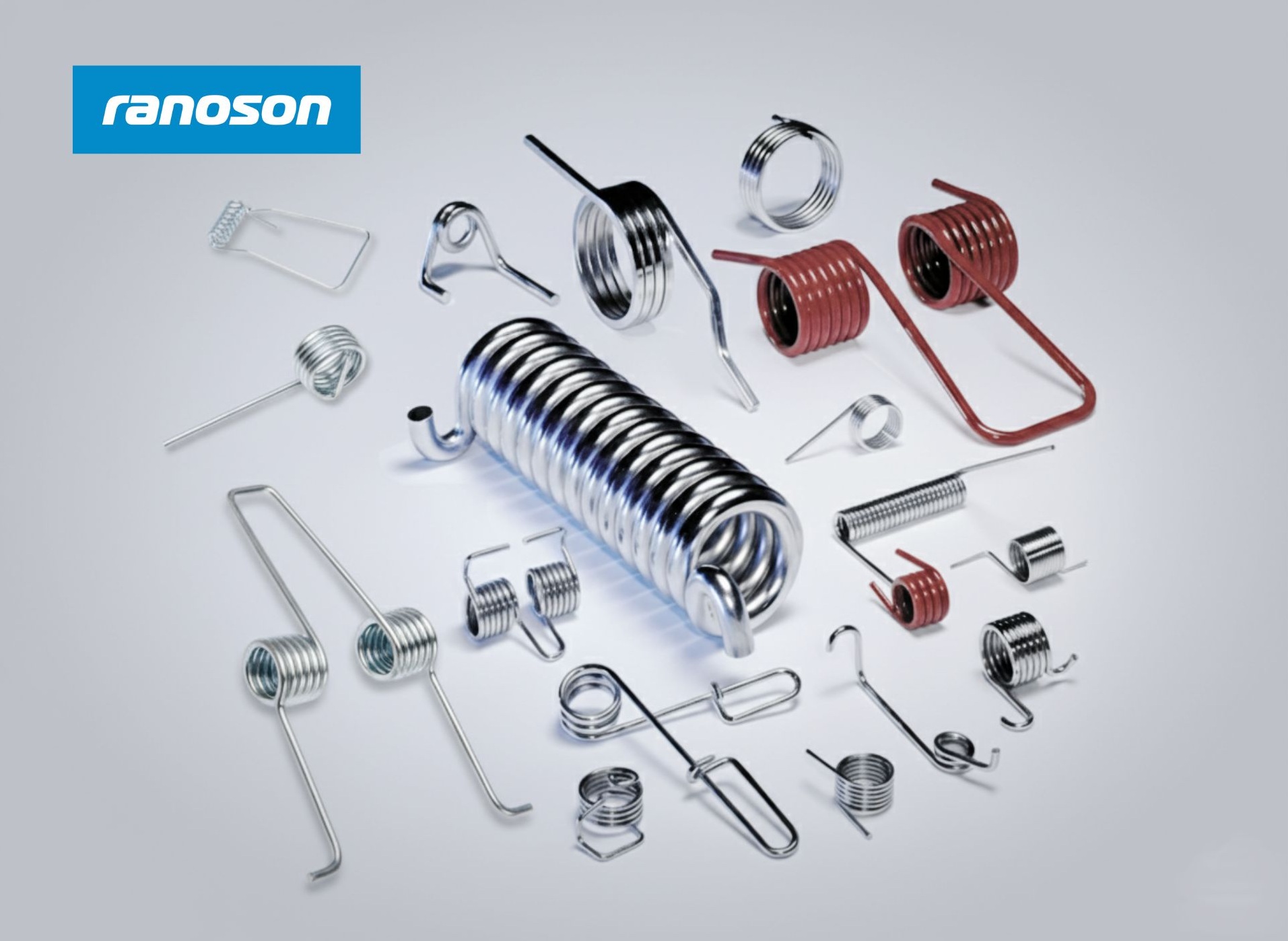
Understanding Torsion Springs and Their Industrial Applications
Posted on: 01 Oct, 2025
When you think of springs, most people picture compression springs or tension springs. But torsion springs are just as important, quietly powering the movement of countless products and machines we depend on every day. Unlike compression or extension springs, torsion springs work by resisting torque or rotational force. That simple principle makes them a go-to solution in industries where controlled motion and energy storage are essential.
Let’s break down how torsion springs work, where they are used, and why OEMs and sourcing managers need to pay close attention to their design and quality.
What Exactly Is a Torsion Spring?
A torsion spring is a mechanical component designed to store and release rotational energy. It usually looks like a coil with arms extending from either end. When one or both arms are rotated around the spring’s central axis, the coil tightens or loosens. This creates torque, which then resists the applied force and returns the spring to its original position once released.
In simple terms, torsion springs do not just push or pull like other springs. They twist. This makes them invaluable wherever rotational force needs to be controlled or repeated reliably.
How Torsion Springs Function
The working principle is straightforward: torque is proportional to the angle of rotation. The more you twist the spring, the greater the force it exerts to return to its original state. This behavior allows torsion springs to deliver consistent torque in applications ranging from very delicate movements to heavy-duty machinery.
Their performance depends on several factors: wire diameter, coil diameter, number of turns, material, and the orientation of the arms. Even small changes in these variables can significantly impact how much torque the spring produces and how long it lasts under repeated use. That is why precision in design and manufacturing is critical.
Industrial Applications of Torsion Springs
Torsion springs are everywhere once you start looking for them. Here are some of the major industries that rely on them:
1. Automotive Industry
From vehicle doors and trunk lids to seat mechanisms and throttle controls, torsion springs are at work. They ensure smooth opening, controlled closing, and reliable positioning. For example, the spring inside a car’s door hinge allows the door to stay open at certain angles rather than swinging freely. In throttle assemblies, torsion springs return the pedal to its resting position safely every time.
2. Electrical and Switchgear
Switchgear and circuit breakers depend heavily on torsion springs to ensure quick, controlled, and repeatable movement. The force of a torsion spring helps contacts snap open or shut with the right speed and pressure. Without this precision, electrical systems could become unreliable or unsafe.
3. Consumer Appliances
Appliances such as washing machines, ovens, and refrigerators often include torsion springs in doors, lids, and latches. These springs help balance weight, prevent slamming, and ensure smooth operation. A refrigerator door, for example, relies on torsion springs to close properly and seal tightly every time.
4. Agriculture and Farming Equipment
Heavy-duty torsion springs are used in seed drills, harvesting machines, and tractor implements. They provide controlled force for moving arms, levers, and gates that face constant vibration and shock in the field. Here, durability is everything. Farmers depend on springs that will not deform or fail mid-season.
5. Industrial Machinery
In manufacturing facilities, torsion springs are used in clutches, valves, conveyor systems, and stamping equipment. Their role is to manage repeated rotations and movements under significant loads. They help machines operate with accuracy and efficiency, cycle after cycle.
6. Everyday Tools and Products
Clothes pins, mouse traps, and clipboards may not sound like industrial applications, but they all rely on torsion springs too. This shows how versatile they are, working just as effectively in simple household items as in advanced machinery.
Why Quality and Design Matter
Not all torsion springs are created equal. The requirements of a car door hinge are very different from those of a circuit breaker or a farm implement. Material selection, coil geometry, surface treatment, and stress-relieving all determine how long the spring will last and how consistently it will perform.
OEMs and sourcing managers need to look beyond just price and focus on engineering precision. A poorly designed or manufactured torsion spring can lead to failures, downtime, and costly replacements. In safety-critical applications like automotive or electrical systems, the stakes are even higher.
Testing and Standards
Reliable torsion springs are tested for fatigue life, torque consistency, corrosion resistance, and dimensional accuracy. Some industries follow strict standards to ensure compliance. For example, automotive suppliers must meet rigorous quality certifications before springs are approved for production use. This testing is not about formality; it is about ensuring the spring can survive thousands or even millions of cycles without failure.
How OEMs and Sourcing Managers Can Decide
If you are sourcing torsion springs, consider these key points:
- Define the operating environment clearly. Will it face vibration, high loads, or temperature fluctuations?
- Work with a manufacturer who can customize coil dimensions, arm shapes, and materials to match your specifications.
- Ask about stress-relieving and surface treatments like coating or plating for added durability.
- Ensure the supplier has proper quality control processes and certifications relevant to your industry.
Torsion springs may look simple, but their role in industrial engineering is significant. They control motion, deliver torque, and ensure reliability across a wide range of applications, from automotive to agriculture. For OEMs and sourcing managers, understanding how these springs work and what to look for in their design can mean the difference between equipment that lasts and equipment that fails.
If you are looking for reliable torsion springs built to meet your exact requirements, let us help you accelerate your growth.
📧 sales@ranoson.co.in
📞 +91 7895010088 | +91 7217013190
